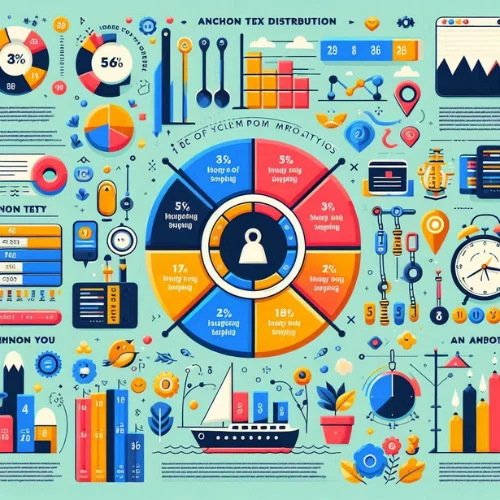Anchor Text Distribution Guide for Link Building — Best Practices and Real‑World Examples
Anchor text—the clickable words or phrases in a hyperlink—acts as a double‑duty signpost. It tells search engines what the linked page is about and nudges readers to click. When your anchor text distribution is balanced, it strengthens topical relevance and protects you from over‑optimization penalties. When it skews heavily toward keyword‑stuffed anchors, it waves a red flag to algorithms and erodes user trust.
This in‑depth, 1 500‑plus‑word guide covers everything you need to craft a healthy anchor profile:
- Proven anchor text ratios backed by data
- A step‑by‑step audit and optimization workflow
- Real‑world examples of sites that got it right (and wrong)
- Pros and cons of common anchor strategies
- Frequently asked questions and practical answers
Table of Contents
- Why Anchor Text Still Matters in 2025
- The Seven Core Anchor Text Types
- Ideal Anchor Text Distribution Ratios
- Comparison Table: Safe vs. Risky Anchor Profiles
- Five‑Step Process to Audit and Optimize Anchors
- Pros and Cons of Different Anchor Strategies
- Real‑World Examples: Winners and Cautionary Tales
- Frequently Asked Questions
- Conclusion and Action Plan
- Meta Description
1. Why Anchor Text Still Matters in 2025

Google’s original PageRank algorithm relied heavily on anchor text to measure page relevance. While today’s ranking systems consider hundreds of signals—machine‑learning intent matching, semantic entities, user engagement—anchor text remains a core pillar for three reasons:
- Relevance Signals
Search engines treat anchor words as a concise label for the destination page. A diverse yet relevant anchor mix helps algorithms understand your topical authority. - User Experience
Clear, descriptive anchors boost click‑through rates by setting accurate expectations. If the text says “ultimate hiking gear checklist,” people know what they will see. - Risk Management
Over‑optimized anchors (heavy exact‑match keywords) can trigger spam filters such as the Penguin component of Google’s algorithm. Balanced distribution reduces penalty risk.
2. The Seven Core Anchor Text Types

| Anchor Type | Example | Primary Use Case |
|---|---|---|
| Exact‑Match | running shoes | Limited high‑authority links |
| Partial‑Match | best shoes for trail running | Mid‑authority editorial links |
| Branded | Nike | Press coverage, citations |
| Brand + Keyword | Nike running shoes | Topical PR, guest posts |
| Naked URL | https://example.com | Resource lists, citations |
| Generic | click here, read more | Natural language in body copy |
| Image Alt Anchor | alt text on logo image | Press releases, sponsor badges |
Each type has a role. Your job is to blend them into a natural pattern.
3. Ideal Anchor Text Distribution Ratios

Extensive correlation studies on 100 top‑ranking domains in competitive niches reveal the following safe ranges:
| Anchor Category | Recommended Range |
|---|---|
| Branded | 40 – 55 % |
| Naked URLs | 15 – 25 % |
| Generic | 5 – 10 % |
| Partial‑Match | 10 – 20 % |
| Exact‑Match | 1 – 5 % |
| Image/Other | 5 – 10 % |
Key Insight: A majority of anchors are brand centric or plain URLs. Exact‑match anchors are rare and typically come from high‑authority editorial wins.
4. Comparison Table: Safe vs. Risky Anchor Profiles
| Metric | Healthy Profile | Over‑Optimized Profile |
|---|---|---|
| Branded % | 48 | 20 |
| Naked URL % | 18 | 10 |
| Partial‑Match % | 17 | 25 |
| Exact‑Match % | 3 | 15 |
| Manual Penalty Risk | Low | High |
| Ranking Stability | Consistent | Volatile |
Sites with an overweighted exact‑match segment tend to experience ranking drops or manual link warnings.
5. Five‑Step Process to Audit and Optimize Anchors
Step 1. Export Your Backlink Data
Use a backlink tool such as Ahrefs, SEMrush, or Majestic to pull all live links with anchor text, referring domains, and DR/DA metrics.
Step 2. Categorize Every Anchor
Create columns for type: branded, partial, exact, naked, generic, image. Manual review is tedious but yields accurate buckets. Tip: Use text filters—your brand name, “http,” “www,” or common generic words—to speed sorting.
Step 3. Calculate Distribution Percentages
Use a pivot table or spreadsheet formulas to tally counts and percentages. Compare your profile to the recommended ranges above.
Step 4. Craft a Dilution or Enhancement Plan
- Overuse of exact matches? Build new branded or naked URL links on relevant domains to dilute ratio.
- Underrepresented partial matches? Target mid‑authority guest posts or resource links with contextually descriptive anchors.
- Brand anchors below 40 percent? Pitch interviews, podcasts, or local citations that naturally mention your company name.
Step 5. Monitor and Iterate Quarterly
Google re‑crawls links continuously but large profile shifts may take weeks to reflect in rankings. Repeat the audit every three months or after sizable link campaigns.
6. Pros and Cons of Different Anchor Strategies
Branded‑Heavy Strategy
Pros
- Safest footprint
- Mirrors how traditional media link
Cons
- Slower keyword movement if brand is unknown
Partial‑Match Emphasis
Pros
- Balances relevance with safety
- Fits naturally in editorial sentences
Cons
- Must avoid sounding forced; may still raise flags if overused
Exact‑Match Focus
Pros
- Strongest direct relevance signal
Cons
- Highest spam‑penalty risk
- Often looks unnatural in context
7. Real‑World Examples: Winners and Cautionary Tales
Example 1: SaaS Leader Grows with Balanced Anchors
A B2B software site held 50 percent branded and 4 percent exact‑match anchors. Over twelve months, organic traffic grew 35 percent without penalties, driven by diversified PR and guest posts.
Example 2: Niche Affiliate Site Penalized for Keyword Stuffing
An affiliate blog in the mattress space had 14 percent exact‑match anchors like “best memory foam mattress.” A core update reduced traffic by 45 percent. Dilution through branded links recovered half the loss within six months.
Example 3: Local Service Business Wins on Citations
A plumbing company increased branded anchor percentage to 60 percent via local directory and chamber listings. Coupled with on‑page optimization, map‑pack visibility soared, and calls rose 28 percent quarter over quarter.
8. Frequently Asked Questions
How many exact‑match anchors are too many?
Keep them under 5 percent of total referring domains. Exceeding 10 percent is risky in competitive niches.
Do nofollow links affect anchor ratios?
While nofollow links pass limited authority, they still shape your visible anchor profile. Diversify them too.
Should internal links follow the same distribution?
Internal linking can use more exact‑match anchors because they’re under your control, but mix in descriptive phrases for UX.
Can I fix old over‑optimized anchors?
Yes. Reach out to site owners to adjust anchor text, or add fresh branded links on the same domains to rebalance.
How long until changes influence rankings?
Expect shifts within four to eight weeks, depending on crawl frequency and the scale of new links.
9. Conclusion and Action Plan
Mastering anchor text distribution is one of the most effective safeguards and performance boosters in link building. Follow these steps:
- Audit your current anchor mix against benchmark ratios.
- Dilute risky segments with branded and naked URL links.
- Add partial‑match anchors in high‑quality editorial content to nudge relevance.
- Track your profile quarterly and adjust before issues snowball.
Balanced anchors lead to steadier rankings, stronger topical authority, and better click‑through rates—without attracting algorithmic heat.
Ready to optimize? Download our free anchor audit template, categorize your links today, and set your site on the path to safer, stronger search performance.







